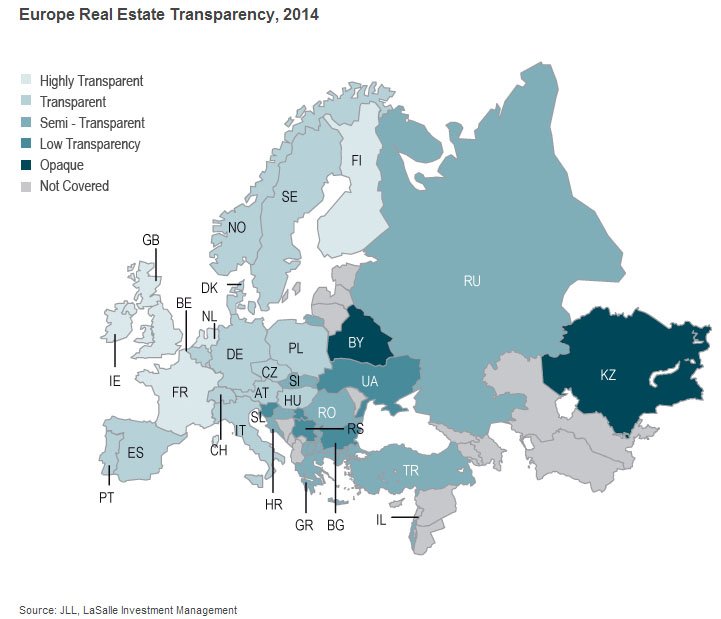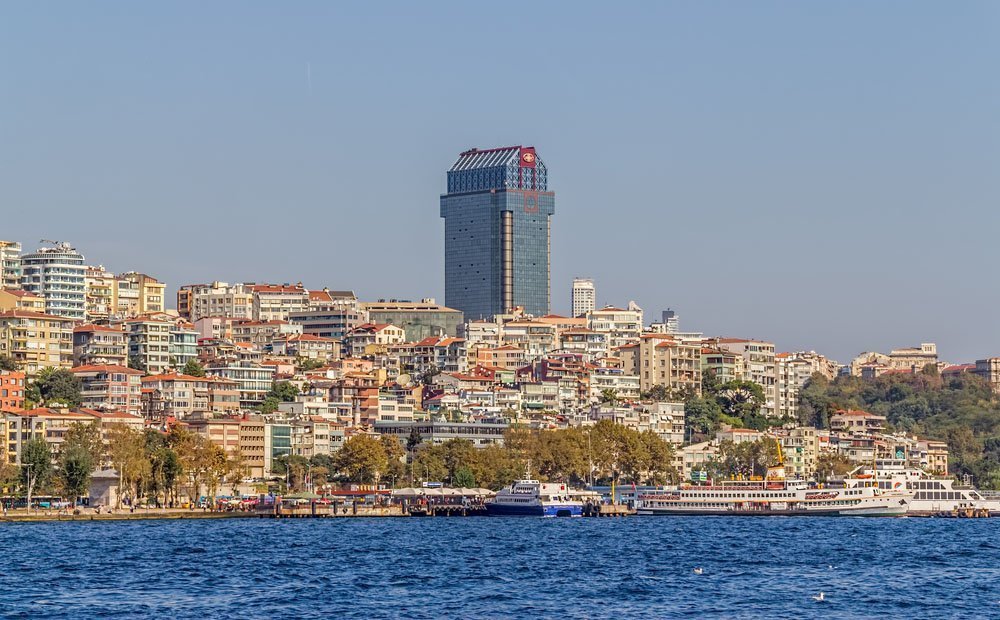Real estate markets in most European countries are transparent. This means that transactions are fast and secured, government behavior in tax and legal spheres is predictable and regulators fully disclose financial information. European part of rating is headed by the Britain, France, the Netherlands, Ireland and Finland. At the same time, JLL experts found problems that affected Central and Eastern European markets. The saddest situation is in Slovenia, Serbia, Bulgaria, and predictably, in Russia (in regions), Ukraine and Belarus.
Transparency of the leading commercial real estate markets (this is the segment, mainly covered by JLL report) is in its top since the financial crisis of 2008-2009. The level of international investment activity has also returned to pre-crisis level and entrepreneurs have already begun to raise the risk curve by investing in emerging markets and in new kinds of real estate.
Highly transparent and transparent
Nine and only nine countries were recognized by experts as "highly transparent." Among them are five European real estate markets: the United Kingdom (1), France (5), the Netherlands (7), Ireland (8) and Finland (9). Markets in most European countries are also "quite transparent" – among them are Sweden with Norway, Spain and Portugal, Germany and Poland, Austria and Hungary, Italy and Switzerland.

Annecy, France
JLL experts note that Europe as a whole remains the center point of free transparent markets where investment flows from all over the worldare flocking. In demand, same as before, are London, Paris and major German cities: the transparency of the local market attracts investors in real estate segment.
So, the Great Britain became the world’sbest real estate market and France is top ranked among all European countries. The Fifth Republic has achieved high rates mainly due to the policy of open data or because of the total disclosure of information about thecentral and localgovernment activities. Ireland has turned out from "semi-transparent" to "highly transparent" this year - thanks to the property marketboom andthe successful results achieved by the "bad bank" NAMA in solving the issue with debtreal estate, as well.
 |
|
See full-size
Semi-transparent
Problems appear when moving along the map to the East. The third "semi-transparent" part includes Slovakia, Romania, Greece, Turkey, Croatia and the capital of Russia... (the situation with Russia is so uneven that Moscow, St. Petersburg and all other regions were divided by three groups and they are compared with other countries).
Romania has made a big step forward to meetthe market transparency and is among the top five position improvers. Country is actively bringing its legislation in accordance with EU requirements and also shows some progress in corruption therapy and legal system improvement.

Istanbul, Turkey
Turkey that used to improve its performance year by year, has hardly managed to add less than one percent in current rating. Buying a property in Istanbul is still considered to be a significant investment but the whole Turkey market hasn’t become more transparent because of the recent political battles.
Low transparency. Europe has no opaque countries
Serbia has improved its position compared with the 2012 rating, while the Bulgarian property market has gone down. Attractiveness of Serbia is supported by the beginning of discussions on joining to the EU in January 2014 and this will cause dramatic changes in legislation. In general, the countries of Central Europe were the leaders in market transparency increase in 2006 - after Poland, the Czech Republic, Hungary, Slovakia and Slovenia had joined the EU.

Ljubljana, Slovenia
The rating criteria
Now let’s say a few words about what the Global Real Estate Transparency Index is and what indicators form the final results. Transparency index is calculated every two years;its latest version has covered 102 real estate markets. We talk about markets, because the index dividesthe BRIC countries into several geographical segments.
The situation with criteria that are 115 in total is more complicated. It’s remarkably that only 56 of them are quantitative, while their share in the total result is 35.5%. The remaining 59 criteria are qualitative or subjective and these are calculated on the basis of the experts' responses on a scale from 1 (highly transparent) to 5 (opaque). Further is more, 115 criteria are gathered in 13 topics and then in 5 large clusters.
In the first block are estimated efficiency and effectiveness indicators. These are the price indices for real estate, the share of institutional investors in the market, independence and quality of the evaluation activities of foreign companies and etc. The second block includes market performance: the presence and duration of time scales, reflecting different quantitative data (rent, yield, occupancy (load) in different types of properties and etc.). In the third section are reviewed the financial regulators - how often the market reportsare published, how detailed they are, whether the English versions are available. The fourth block deals with the laws thereis published all information about real estate registration and taxes. The fifth section is devoted to the transaction process: whether the complete presale information is available, how transparent are the auctions and how honest are realtors.
Text: Kyril Ozerov, ee24.com